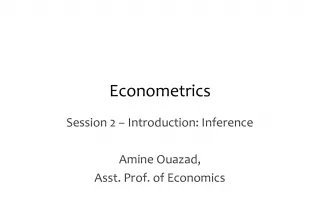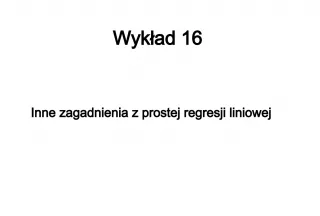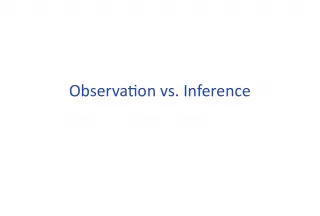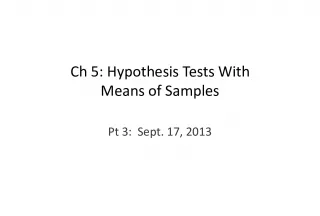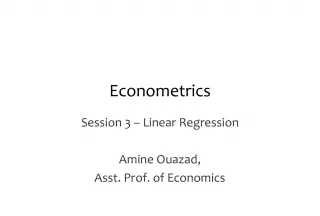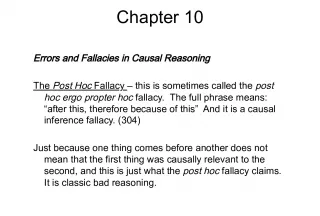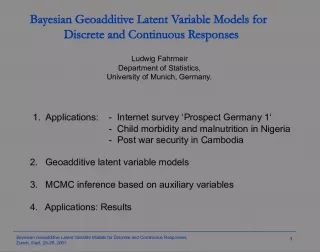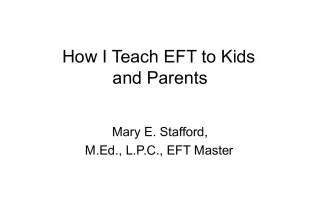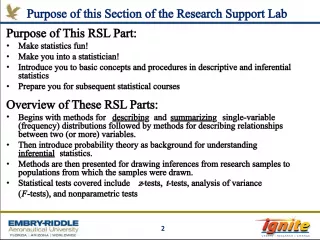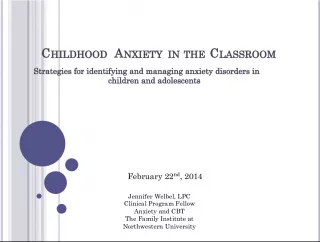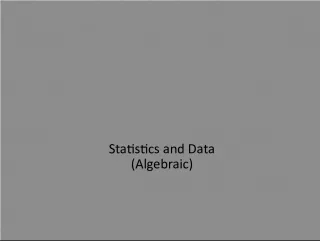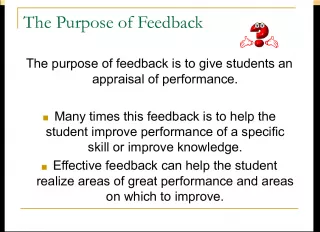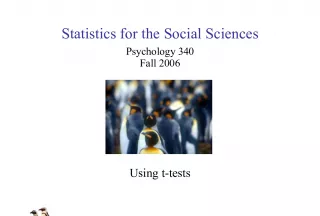Introduction to Inference and Confidence Intervals in Statistical Inference


This chapter provides an overview of statistical inference, which is the process of using sample data to draw conclusions about a population. It highlights the importance of probability in expressing the
- Uploaded on | 0 Views
-
 maelyameyer
maelyameyer
About Introduction to Inference and Confidence Intervals in Statistical Inference
PowerPoint presentation about 'Introduction to Inference and Confidence Intervals in Statistical Inference'. This presentation describes the topic on This chapter provides an overview of statistical inference, which is the process of using sample data to draw conclusions about a population. It highlights the importance of probability in expressing the. The key topics included in this slideshow are . Download this presentation absolutely free.
Presentation Transcript
Slide1Introduction to InferenceConfidence Intervals
Slide2Statistical Inference Provides a method for drawing conclusions about a population from sample data. We use probability to express the strength of our conclusions.
Slide3Remember! The purpose of this chapter is to describe the reasoning used in statistical inference, not the methods. Later chapters will show how to modify these techniques to make them practically useful.
Slide4SAT Math Scores in NC Suppose the SAT Math test is administered to an SRS of 500 North Carolina high school seniors and the mean score turns out to be 461. Suppose (unrealistically) we also know the standard deviation of the population is 100. What can we say about the mean score in the population of all 100,000 North Carolina high school seniors?
Slide5Statistical Confidence 68-95-99.7 Rule In 95% of all samples, the unknown µ (the population mean score) lies between and .
Slide6Conclusion Proper Conclusion : We are 95% confident that the unknown true mean score for NC seniors is between 452 and 470. (If we selected many different SRS of size 500, 95% of the samples taken would yield an interval containing µ.) WRONG Conclusion : There is a 95% chance that µ falls between 452 and 470.
Slide7Confidence Interval We just created a 95% confidence interval! Form: estimate ± margin of error It gives the probability that the interval will capture the true parameter value in repeated samples.
Slide8Confidence Interval http://www.ruf.rice.edu/~lane/stat_ sim/conf_interval/index.html
Slide9ConditionsThe construction of a confidence interval for a population mean µ is appropriate when the data come from an SRS from the population of interest the sampling distribution of is approximately normal
Slide10More Confidence Intervals A level C confidence interval for µ is The bottom row in Table C gives the values of z* for many confidence levels
Slide11Inference Toolbox1. Identify the population of interest and the parameter you want to draw conclusions about. 2. Choose the appropriate inference procedure. Verify the conditions for using the selected procedure. 3. If the conditions are met, carry out the inference procedure. 4. Interpret your results in the context of the problem.
Slide12Corn Yield(Homework #10.8 on p 550) a) Find the 90% confidence interval for the mean yield µ for this variety of corn. b) Find the 95% confidence interval. c) Find the 99% confidence interval. d) How do the margins of error in a) , b) , and c) change as the confidence level increases?
Slide13More Corn(Homework #10.9 on p 551) a) Compute the 95% confidence interval for the mean yield µ. b) Is the margin of error larger or smaller for the sample of 60 plots than the margin of error we found for the sample of 15 plots? c) Will the 90% and 99% intervals for a sample of size 60 be wider or narrower than those for n=15?
Slide14CI Behavior margin of error = The margin of error gets smaller when: z* gets smaller (smaller confidence level) gets smaller n gets larger
Slide15Choosing Your Sample Size A wise user of statistics never plans data collection without planning the inference at the same time! You can arrange to have both high confidence and a small margin of error by taking enough observations. Solve for n.
Slide16The Moral of the Story Think of a confidence interval as a net and the parameter as a fish. Our ultimate goal is to catch the fish using the smallest net necessary. If our net is too small, it will be very hard to catch the fish. (Our confidence level is too low.) If our net is too big, it’s hard to use. (Our margin of error is too big.) In this chapter, we’ll see how to create the right-sized net for the situation.
